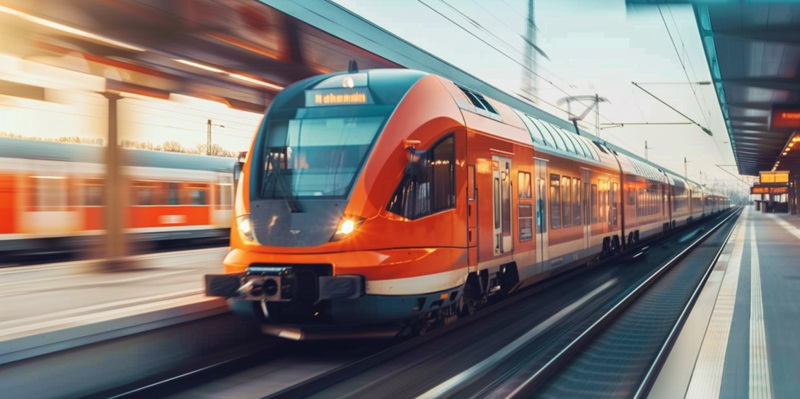With the advent of Artificial Intelligence (AI), Indian Railways is embarking on a journey of transformation, enhancing the efficiency, safety, and reliability of its operations. As one of the largest railway networks globally, the incorporation of AI into the Indian Railways system is poised to revolutionize the transportation landscape in the country.
Shifting from Reactive to Proactive with AI
Early Detection and Safety Enhancement
The transformative power of AI in rail safety is unparalleled. Advanced detection systems using AI-driven automation allow for real-time analysis of rolling stock components, offering a predictive approach to maintenance. Sensors mounted on tracks and trains collect vast amounts of data, which AI systems analyze to predict potential issues, from minor wear and tear to critical failures. This predictive capacity is reducing the risk of derailments and collisions, ensuring that the millions of passengers who rely on Indian Railways each day enjoy a safer journey.
AI technologies are revolutionizing track and wheel maintenance, detecting anomalies that the human eye cannot see. Sensor data interpreted by AI ensures that the integrity of the complex railway infrastructure is consistently monitored and maintained. The technology can pinpoint the exact locations of faults, allowing for prompt repairs. This decreases the number of service disruptions and protects against the possibly catastrophic consequences of overlooked maintenance issues, marking a significant leap forward in railway safety protocols.
Operational Efficiency and Cost Savings
AI is redefining maintenance strategies in Indian Railways, minimizing downtime and cutting operational costs. It enables the deployment of resources only where and when they are truly needed, avoiding the inefficiency of routine checks. This smart allocation leads to increased availability of trains and more reliable schedules, directly benefiting customers who depend on the timeliness of services. Moreover, reduced wear and tear on components and infrastructure translates to financial savings and longer life spans for railway assets.
The leap from traditional maintenance schedules to those influenced by AI analytics represents a fundamental shift in railway operations. Instead of blanket approaches to maintenance, which can be costly and ineffective, AI prioritizes tasks based on actual condition and risk. By predicting when components are likely to fail, Indian Railways can perform precise interventions, keeping trains running smoother for longer and ensuring a higher level of service for passengers.
Data-Driven Decision Making for Smarter Railways
Enhancing Asset Performance
Through the power of machine learning, AI delves deep into performance data to identify patterns that precede failures. Such predictive analytics extend the life of railway assets by enabling timely maintenance before breakdowns occur. The rise in utilization rates of rolling stock means that trains spend less time in repair yards and more time serving passengers, which in turn raises the profitability and efficiency of the entire railway system.
AI in Indian Railways acts as an expert assistant, consistently analyzing the immense inflow of data from across the network. By distinguishing between normal fluctuations and genuine alerts of deterioration, AI ensures that management can focus on high-priority areas that require attention. This not only conserves resources but also boosts the performance and reliability of assets, providing a consistently high-quality experience for passengers.
Competitive Edge in Transportation
In the competitive landscape of Indian transportation, AI sets Indian Railways apart. The strategic implementation of AI signifies the commitment to adopt cutting-edge technology, which is appealing to the increasing tech-focused consumer base. It also sends a strong message to investors that Indian Railways is future-oriented, cementing its status as a pioneer in railway innovation and assuring continued relevance in the transportation sector.
The infusion of AI into its operations places Indian Railways at the forefront of the transport industry’s technological advancements. The ability to forecast and preemptively address maintenance issues translates into enhanced customer satisfaction. In a market where consumers demand efficiency and reliability, this tech-forward approach stands to reinforce customer loyalty and trust in Indian Railways.
Scalability and Adaptability: AI as a Sustainable Future
Growth and Infrastructure Advancements
As passenger numbers swell and the demand for goods transport rises in tandem with India’s economy, the scalable qualities of AI technology become even more valuable. AI structures are inherently designed to grow, learning from new data and refining their algorithms continually. This trait ensures that Indian Railways can handle increased traffic and complexity without compromising service quality, which is pivotal for a growing nation’s infrastructure needs.
By employing AI that effortlessly scales with demand, Indian Railways ensures a consistently high standard of service as it expands. New routes and services can be integrated without drastic overhauls to the existing system. This adaptive capacity is fundamental for a country with ever-changing transportation requirements and sets the stage for continued enhancement of the national railway infrastructure.
Future-Proofing Indian Railways
The Indian Railways, one of the world’s most extensive networks, is modernizing its operations through Artificial Intelligence (AI). This technology infusion aims to improve the overall efficiency and safety of the rail system, while also enhancing reliability for passengers. AI’s potential to transform various facets of railway operations, from predictive maintenance of trains and tracks to automated signaling systems and crowd management, is significant. Additionally, AI can aid in optimizing routes, reducing travel times, and improving the customer experience with personalized services. By embracing AI, Indian Railways is stepping into a new era of innovation, ensuring it remains a vital backbone of India’s transport infrastructure. This smart-tech integration positions the railway network to better serve the country’s growing population and economic demands, providing a leap forward in India’s quest for a more connected and efficient future.

